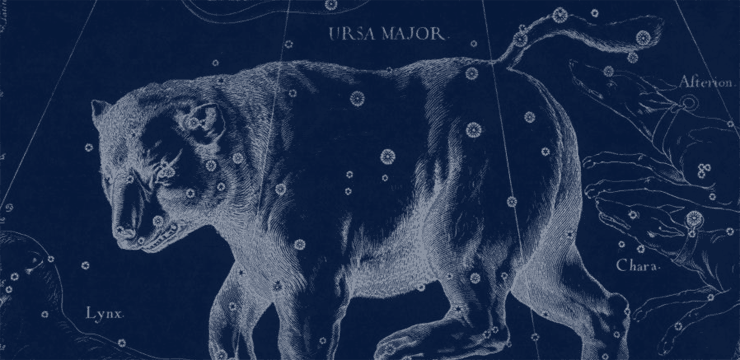
In Like a Lion… Out Like a Lamb
March 2011 :
We have many indicators that the month of March marks a change of season. The first was last month, with the appearance of Punxsutawney Phil, the forecasting groundhog. Although some really put a lot of stock into his predictions, the real story is that Phil's day is actually in the middle of the season of winter, one of the year's cross quarter days. Therefore, whether he sees his shadow or not, there is still about six weeks worth of winter, but, it does signal the beginning of the thought of springtime.
In the sky, we are also seeing the constellation marked as the "sign of spring." We've all heard the old adage that the season of spring, the month of March, comes, "in like a lion..." Rising out of the eastern horizon is Leo, the Lion, the scourge of the tiny village of Nemea. Apparently, this lion was so big, every step down of his paw would crush a house. Hercules was charged with getting rid of this beast. His way of doing so was not very nice to any cat lovers, but suffice it to say he did kill the lion, then swung him into the sky so the Nemean residents would know they didn't have to worry anymore.

Leo rises head first out of the eastern horizon this time of year. You can easily see this, by looking for a backwards question mark, with a rather bright dot. The circular part is his beautiful head and mane, while the brighter dot star, located where his front paws should be, marks his heart - our ancestors weren't very well-versed in anatomy. This star's name is very easy to remember. If we recall that one name for a lion is the King of Beasts, his heart star translates to "King," Regulus. Notice the root word Rex.
Following the head and mane will be a triangle of stars, his back legs. If you draw a line from one of the head stars to his legs, you can actually see this constellation shape. And no, Leo has no tail; in fact, the stars that are often seen as the tuft is another constellation, Coma Berenices, Berenice's hair. This queen so loved her king that she promised if he would come back from war alive, she would sacrifice her hair to the gods. He did; she did. Although it isn't very bright, this set of stars can still be seen in city skies.
The best star to connect the two parts of Leo's body is Algieba, Gamma Leonis. Through even a small telescope, this star breaks into two, of almost the same brightness. Because of this, some people have nicknamed this double "the headlights."
Although Leo is rather easy to find by its shape, if you are having problems looking for it, there is a great marker. The Big Dipper, part of the Big Bear - Ursa Major - that can be seen in all types of skies, sits directly above the lion. Therefore, all you have to do after finding the Big Dipper is to pretend that it's been in the sky so long that the bottom's starting to rot out, and, if so, where will the water inside it go? Right on to Leo's back. So, if you can't see Leo, find the Big Dipper, turn it into the Big Dripper, and watch the water drip right onto the lion's back.
Going back to our old adage, it ends with, "...and out like a lamb." And what is that? Aries, the Ram, famous in astrological circles. A story for another time.
When to Observe
Constellations
Related Topics




